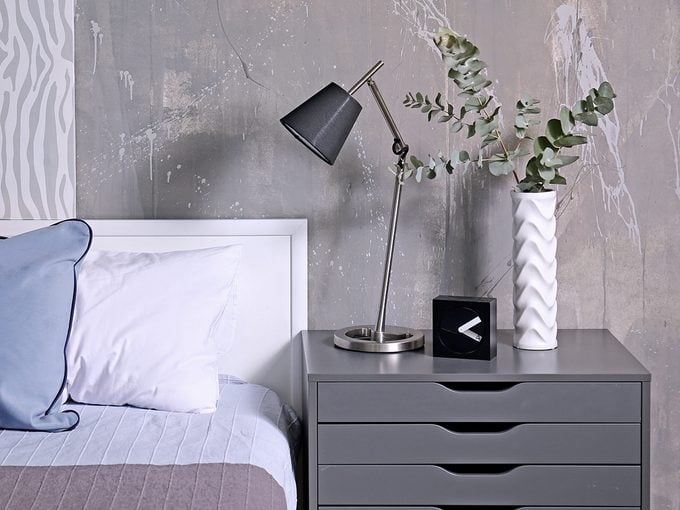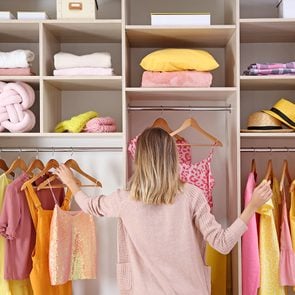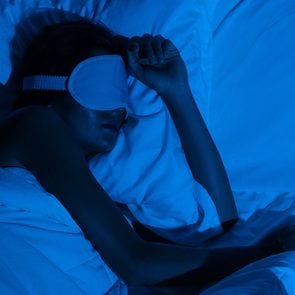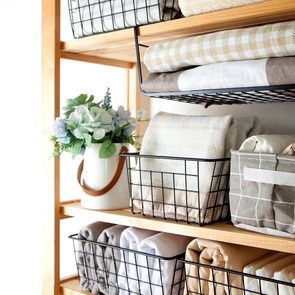How to Organize Your Nightstand—And Why You Should
Nightstand doubling as a dumping ground? Organizing it is easier than you think, and it might even help you sleep better.
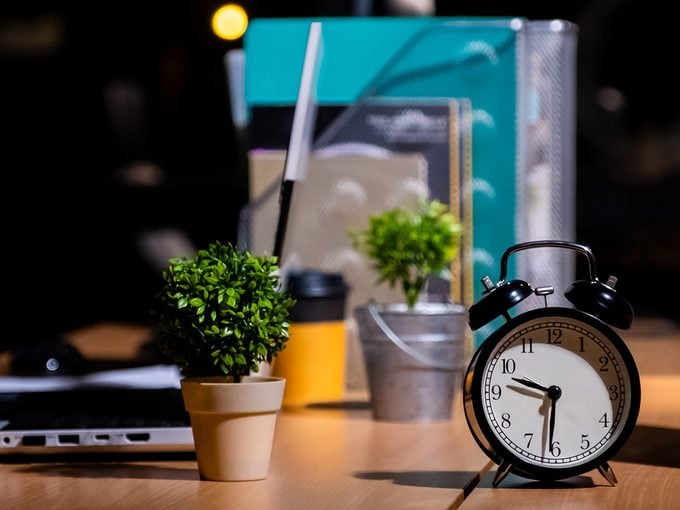
Why bother decluttering your nightstand?
Think about it: Your nightstand is the last thing you see before bed, and the first thing you see when you wake up. If it’s a jumbled mess, your mind and body could be suffering more than you think.
Researchers say living and sleeping in disorganized spaces can not only exhaust important cognitive abilities, but it can also diminish our working memory—the part of our brains responsible for planning and problem-solving.
A cluttered nightstand can also impact your sleep, especially if it’s home to light-emitting devices like smartphones, tablets and alarm clocks, says Tara Delorme, a PhD student at McGill University studying circadian rhythms. “Light actually reduces the amount of melatonin that we release at night,” says Delorme (melatonin being a hormone our brains produce to help us sleep). When we’re exposed to light at night—even if we’ve just briefly glimpsed an illuminated screen or clock face—Delorme says this can dampen our hormonal rhythms, triggering our bodies into wakefulness and making it harder for us to sleep.
While you don’t need to get rid of your alarm clock entirely, you might want to purchase one with dimming options, or choose to wear a sleep mask, says Delorme. You should also consider storing your electronics elsewhere. As for the rest of your nightstand stuff, here’s how to decide what stays and what goes—and how to organize it.
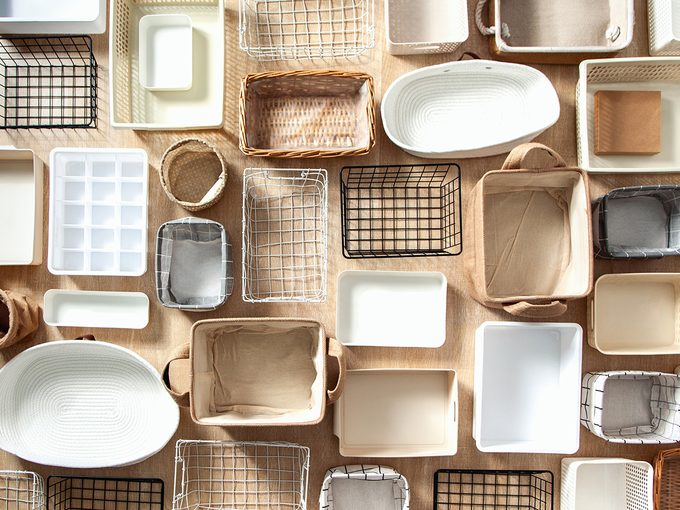
Start by taking stock
First, clear off the surface of your nightstand and empty any drawers, laying everything out on your bed. Having a visual of your nightstand’s full contents is the only way to accurately assess what you need and what you don’t, says Toronto-based home decor YouTuber Alexandra Gater.
Next, Gater suggests organizing items in four piles: A “keep” pile, a “store elsewhere” pile, another for donating and a final for trashing. “When I’m organizing, I find it helpful to picture my routine,” says Gater. If you apply essential oils each night, you’ll want to keep those handy. On the other hand, if you rarely make time to write in your journal, consider storing that item in a desk drawer or bookcase instead. Delorme suggests prioritizing things you associate with relaxation—a soothing candle, for instance—and relocating items you associate with work or everyday life, like a planner, for better sleep hygiene.
For the contents that make the “keep” pile, Gater recommends using drawer organizers to group similar items together. She suggests seeking out organizers or containers that are appropriately sized for the grouped items, like a small dish for rings or a rectangular crate (an old, sturdy shoebox could even work) for books. “If you get containers that are way too big, you’re just going to end up filling it with loads of other stuff,” says Gater.
What happens if, over time, things start getting crowded again? This just means you need to reassess, says Clare Kumar, a productivity coach in the Greater Toronto Area. “You might find there are items that you don’t have a purpose for, or they’re in the wrong room,” she says. In this case, maybe it makes more sense to relocate those creams and body care products you only use after you’ve showered to the bathroom instead.
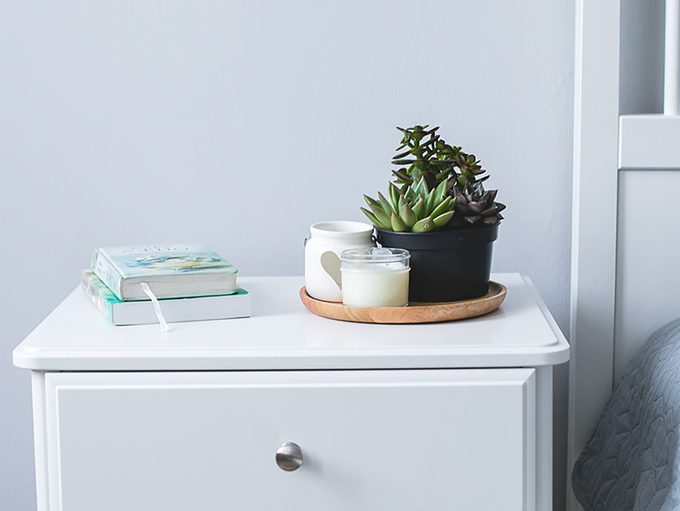
Try a tray on top
If you frequently load junk onto your nightstand, you’re not alone. Just like your kitchen counter makes a convenient dumping ground for everything from car keys to spare change, your nightstand acts as a catchall for everything you might need in order to go to bed (and maybe some spare change, too). Both Kumar and Gater say trays help prevent clutter on the nightstand as they keep things corralled and provide a designated drop-spot for items.
You might also consider expanding your storage options beyond the nightstand by investing in under-bed storage on wheels or a small basket at your bedside. Not only do these strategies keep the clutter off the nightstand, but they also keep it out of plain sight, freeing your mind of any visual distractions and perhaps even resulting in a better night’s sleep.
Make it a habit
Both Gater and Kumar say keeping things organized really comes down to practice. Maybe you make it a goal to tidy your nightstand after you make the bed every morning, or before you brush your teeth at night. If you pair the task with something you already do every day, chances are you’ll be better positioned to turn a one-time thing into a full-fledged habit. And while it’ll take a bit of work to get things to a manageable state, Gater promises it’s worth it. “The first time you tackle a big organization, it’s going to be a long process. But once you put those systems into place, it becomes way easier to manage.”
For more tidying tips and tricks, check out these inspiring home organizing shows on Netflix.
